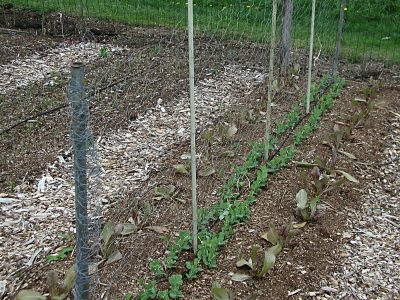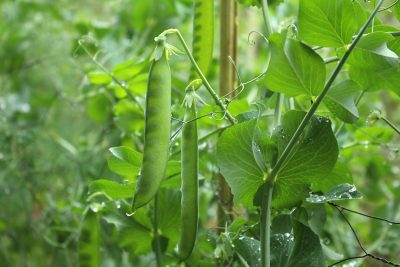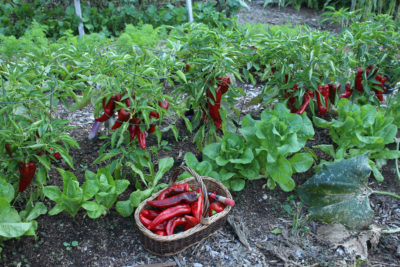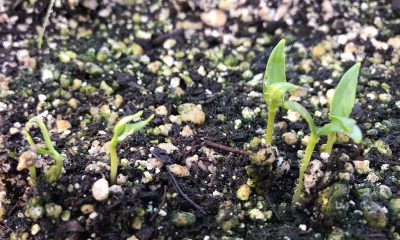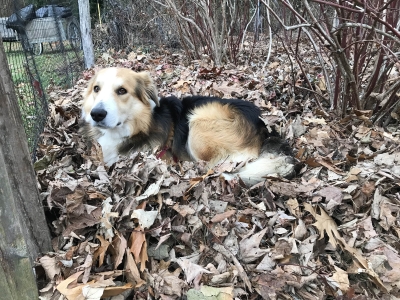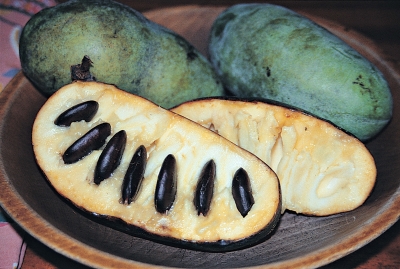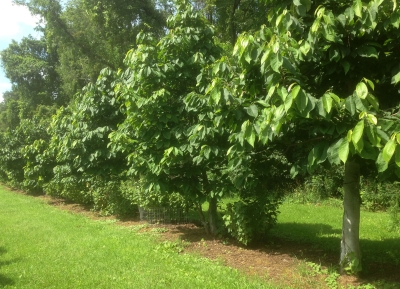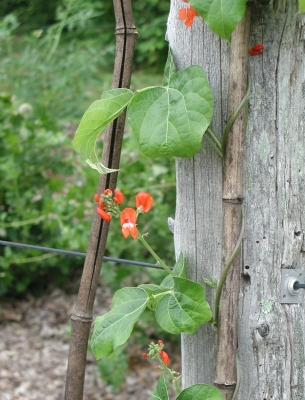Some You Win, Some You Lose. Why?
Mo’ Better Berries
Because I’ve grown a number of varieties of blueberries for a long time, I’m often asked what variety I would recommend planting. Or whether you need to plant two varieties for cross-pollination in order to get fruit.
The answers to both questions are intertwined. First of all, blueberries are partially self-fertile so one variety will bear fruit all by itself.
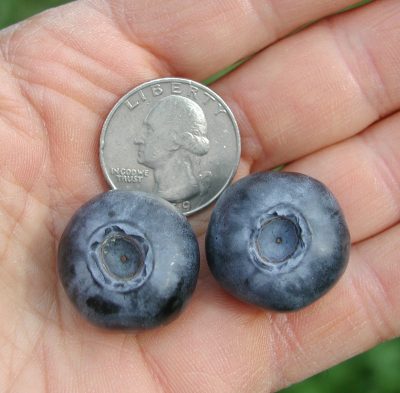
But — and this is important — berries will be both more plentiful and larger if two different varieties cross-pollinate each other. (Apples, in contrast, are self-sterile so, with few exceptions, won’t bear any fruit at all without cross-pollination.)
Benefits of cross-pollination aside, why plant just one variety of blueberry? Different varieties ripen their fruits at different times during the blueberry harvest season. With a good selection of varieties, that season can be very long.
Here on the farmden, the season opens with Duke and Earliblue, both usually ready for picking (in Zone 5) at the end of June. The season moves on, with Blueray, Berkeley, and Bluecrop ripening in July, and Jersey, Toro, and Nelson in August.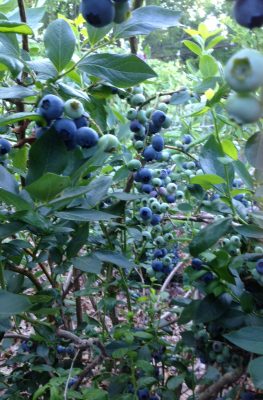 As I write, in September, the variety Elliot is still bearing ripe berries.
As I write, in September, the variety Elliot is still bearing ripe berries.
So if you’re going to plant blueberries, which I highly recommend doing, plant more than one variety, and choose the varieties that let you enjoy berries with your morning cereal or your after dinner ice cream over a long season.
Soil Matters
I pay special attention to the soil when I plant blueberries, and it pays off. Blueberries have rather unique soil requirements among cultivated plants, demanding those that are very acidic, high in organic matter, low in nutrients, and consistently moist and well-aerated. (Most cultivated plants like soils that are only slightly acidic and have moderate to high fertility.) No matter if a soil is not naturally to blueberry’s liking; it can be made so.
The soil where I planted my blueberries drains well. If it did not, I would either choose a better location or else create mounds on which to plant.
Next in importance is soil acidity; I test it before planting. If it’s not at the required pH of 4 to 5.5, I spread pelletized sulfur, a naturally mined mineral, over the ground. (Pelletizing the sulfur makes it less dusty to work with.) 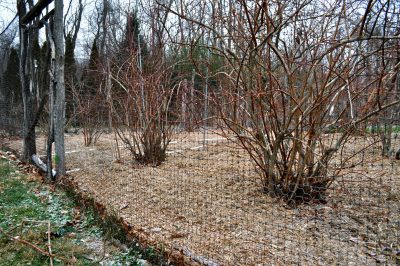
The amount of sulfur, per 100 square feet, needed to lower the pH by one unit would be a pound in a sandy soil and three pounds in a clay soil. My clay loam’s initial pH was about 6.5, so I needed 3 pounds of sulfur per hundred square feet to lower that pH to 5.5, that upper limit enjoyed by blueberries.
Now, for planting. I mix a bucketful of peat moss with the soil in each planting hole and then tuck the plants and soil into the hole, setting the plants slightly deeper than they stood in the nursery. Peat moss is a long-lasting source of organic matter, unique among organic matters in also being low in nutrients.
Right after planting, I spread a 2 to 3 inch depth of some weed-free, fluffy organic material, such as wood shavings, wood chips, straw, pine needles, or autumn leaves, as mulch. The mulch snuffs out weeds, which are more adept than blueberry at soaking up water and nutrients, and keeps the soil cool and moist, just as it is in blueberry’s natural habitats.
With regular watering, as needed, pruning, and annual mulching and attention to soil acidity, blueberry leaves should maintain a healthy, green color, and stems should grow a couple of feet or so each year. My planting of 16 plants yields almost 200 quarts per year of delicious, organic blueberries.
Celeriac Failure, Again
Blueberries have been a great success; now for a failure. Celeriac, a celery relative that puts that flavor into its softball-sized, white root, isn’t well-known as a vegetable, but I’d like to grow it. I’ve tried, for the past couple of years, without success. The problem is some sort of celery blight that kills the top growth so there’s no greenery to feed the root.
Both early blight and late blight, fungal diseases, could cause problems. They arrived in gardens on infected celery seed and/or infected celery debris from the previous cropping season. 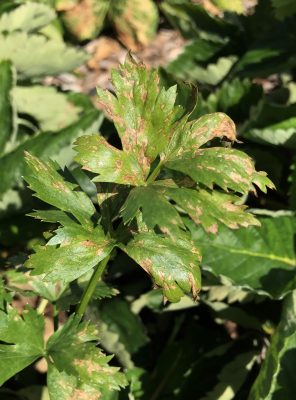 Last fall I thoroughly cleaned up diseased plants, even planted some celeriac this year in the greenhouse. Failure occurred both outdoors and in the greenhouse, although lots of rain and heat could have helped (the fungi or bacteria, not me).
Last fall I thoroughly cleaned up diseased plants, even planted some celeriac this year in the greenhouse. Failure occurred both outdoors and in the greenhouse, although lots of rain and heat could have helped (the fungi or bacteria, not me).
I’m not giving up. Perhaps the seed is the problem. Seed can harbor the disease, but can be “cleaned” up with a heat treatment: 30 minutes at 118°F. As a last resort, I could spray an organic fungicide such as one of the organically approved materials based on copper or hydrogen peroxide. Perhaps this time next year I’ll be eating celeriac.

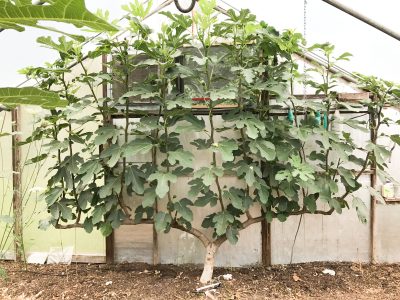 Left to its own devices, a fig can grow into a tangled mess. In part, that’s because fig trees can’t decide if they want to be small trees, with single or a few trunks, or large shrubs, with sprouts and side branches popping out all over the place.
Left to its own devices, a fig can grow into a tangled mess. In part, that’s because fig trees can’t decide if they want to be small trees, with single or a few trunks, or large shrubs, with sprouts and side branches popping out all over the place.
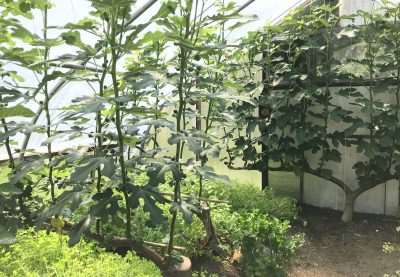 All that despite my attempts at control by going over plants with a toothbrush dipped in alcohol, oil sprays, and sticky barriers to keep ants, which “farm” these pests, from climbing up the trunks.
All that despite my attempts at control by going over plants with a toothbrush dipped in alcohol, oil sprays, and sticky barriers to keep ants, which “farm” these pests, from climbing up the trunks.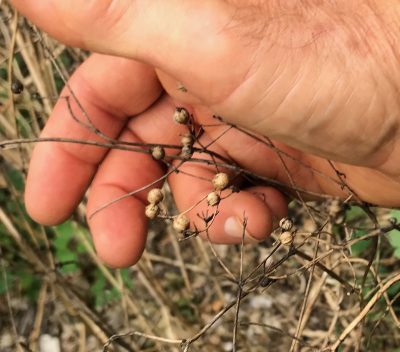 Those seeds will drop and germinate in the cooler temperature a few weeks hence. But I need cilantro now.
Those seeds will drop and germinate in the cooler temperature a few weeks hence. But I need cilantro now.
 So I started the water sprays again, which have the potential problem of creating so much humidity and moisture that ripening figs rot. On the other hand, it might set back the scale, perhaps by knocking off ants, who “farm” scale. I also ordered a new predator, one for scale, Aphytis melinus.
So I started the water sprays again, which have the potential problem of creating so much humidity and moisture that ripening figs rot. On the other hand, it might set back the scale, perhaps by knocking off ants, who “farm” scale. I also ordered a new predator, one for scale, Aphytis melinus.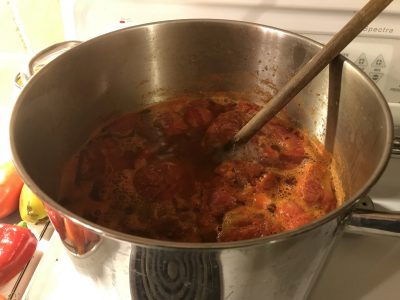 No de-skinning, de-seeding, or chopping. The pot is allowed to cool a bit after its volume has been reduced to one-half to two-thirds of the original volume.
No de-skinning, de-seeding, or chopping. The pot is allowed to cool a bit after its volume has been reduced to one-half to two-thirds of the original volume.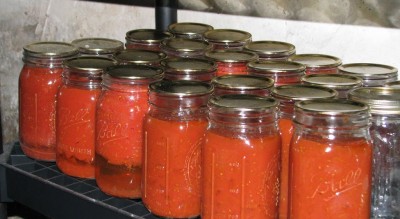 Once cool, pressing down on the the center of each lid lets me know whether that jar has sealed well. The lid should not move down when pressed.
Once cool, pressing down on the the center of each lid lets me know whether that jar has sealed well. The lid should not move down when pressed.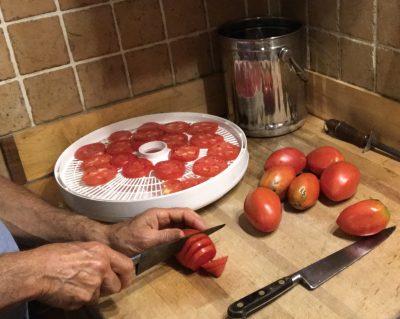
 Descriptions of Rose de Rescht tell how it blossoms repeatedly through the season; not my rose. I finally honed down my rose’s identity from among the choices suggested by a number of rose experts based on photos and descriptions I had sent them.
Descriptions of Rose de Rescht tell how it blossoms repeatedly through the season; not my rose. I finally honed down my rose’s identity from among the choices suggested by a number of rose experts based on photos and descriptions I had sent them.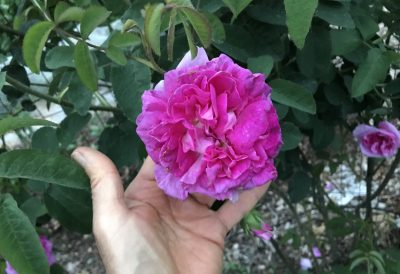 And the fragrance! Intense, and my favorite of all roses. Rose d’Ipsahan is a variety of Damask rose and has the classic fragrance of that category of rose.
And the fragrance! Intense, and my favorite of all roses. Rose d’Ipsahan is a variety of Damask rose and has the classic fragrance of that category of rose.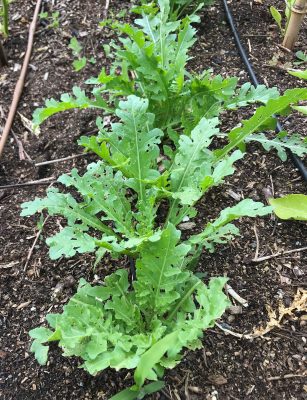 More important, Italian arugula tolerates heat better. As my rows of common arugula are sending up seed stalks, the Italian arugula just keeps pumping out new leaves.
More important, Italian arugula tolerates heat better. As my rows of common arugula are sending up seed stalks, the Italian arugula just keeps pumping out new leaves. But if I want some garlic flavor in spring, I can pull stalks out of the ground, peel off the outer covered of leaf sheath, and chop up the ivory white lower portion for use. Many I just pull out and toss into the compost pile; the garlic is getting weedy.
But if I want some garlic flavor in spring, I can pull stalks out of the ground, peel off the outer covered of leaf sheath, and chop up the ivory white lower portion for use. Many I just pull out and toss into the compost pile; the garlic is getting weedy.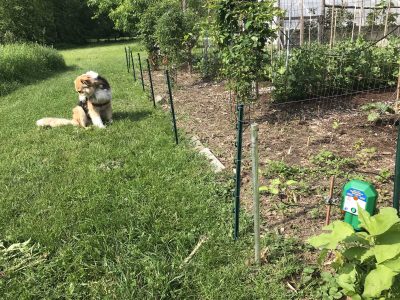
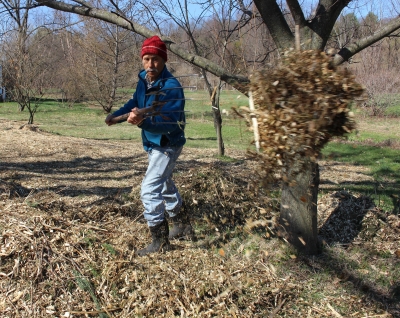 If spreading mulch is delayed until the soil turns dry, all the more water will be required to give the soil below a good drenching.
If spreading mulch is delayed until the soil turns dry, all the more water will be required to give the soil below a good drenching.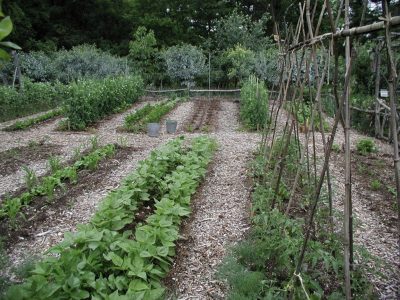
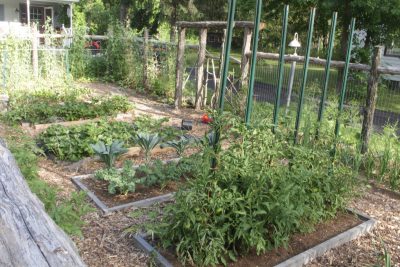
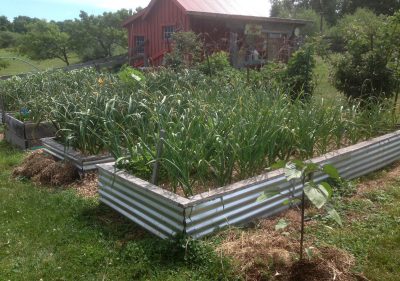 If the area is wet, though, taking soil from paths is going to lower them, making them that much wetter.
If the area is wet, though, taking soil from paths is going to lower them, making them that much wetter.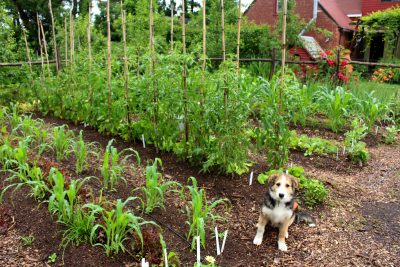 Paths get replenished with wood chips only if they start to get weedy or bare soil starts peeking through.
Paths get replenished with wood chips only if they start to get weedy or bare soil starts peeking through.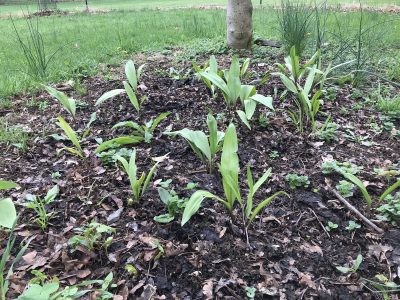

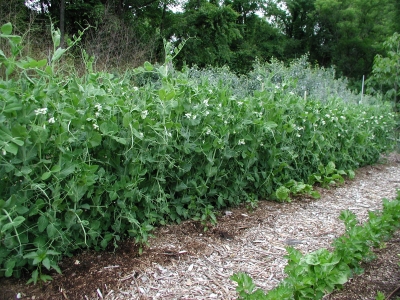 Plus, if the peas are planted down the center of my 3-foot-wide garden beds, I can flank them with other vegetables, such as carrots, radishes, lettuce, and arugula.
Plus, if the peas are planted down the center of my 3-foot-wide garden beds, I can flank them with other vegetables, such as carrots, radishes, lettuce, and arugula.